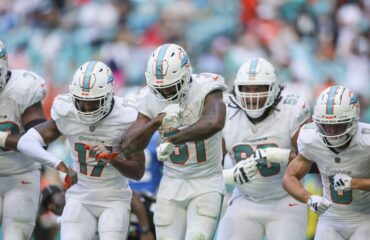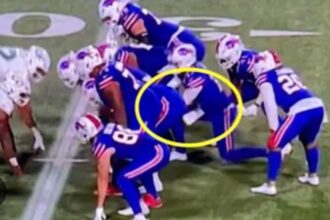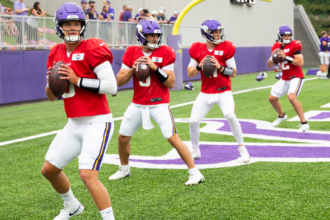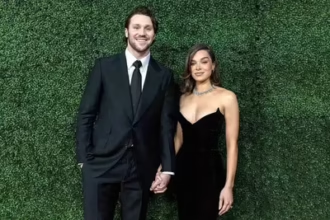The Miami Dolphins face numerous challenges on both offense and defense, compounded by several one-year contracts that will open up even more gaps on the roster. With 26 unrestricted free agents requiring decisions and limited salary cap space, the team has a tough road ahead.

As February and March approach, the Dolphins will need to navigate their roster and cap situation carefully. Replacing departing free agents while cutting down the roster won’t be an easy task.
Per Over The Cap, Miami enters the offseason needing to clear approximately $2.63 million just to break even. This puts general manager Chris Grier in a position where tough roster cuts will be necessary, with hopes that the annual cap increase provides some much-needed relief.
Dolphins can create significant cap space by making roster cuts
There are other methods to create cap space, including restructures and even extensions, but the Dolphins can start saving money by releasing these players:
| Player | 2025 cap | Dead Money | Savings |
|---|---|---|---|
| Durham Smythe |
$4.83 million |
$2.66 million |
$2.18 million |
| Jason Sanders |
$4.73 million |
$1.39 million |
$3.34 million |
| Raheem Mostert |
$4.07 million |
$1 million |
$3.07 million |
| Jake Bailey |
$2.53 million |
$550,000 |
$1.98 million |
| Channing Tindall |
$1.61 million |
$212,225 |
$1.39 million |
| Blake Ferguson |
$1.17 million |
$0 |
$1.17 million |
| Tanner Conner |
$1.1 million |
$0 |
$1.1 million |
| Erik Ezukanma |
$1.1 million |
$0 |
$1.1 million |
| Julian Hill |
$1.03 million |
$4,168 |
$1.03 million |
| Total | $22.17 million | $5.82 million | $16.36 million |
The Dolphins are unlikely to release Jason Sanders—and they shouldn’t. However, restructuring his contract to free up cap space would be a smart move, something the team has done in the past. This strategy, though, is part of what gets Miami into salary cap trouble. While restructures create short-term savings, they shift financial obligations into future years. General Manager Chris Grier must be cautious this offseason, particularly with restructures involving players like Tyreek Hill and Jalen Ramsey, who may not be part of the team’s long-term plans.
The Dolphins’ predicament is that they’ll almost certainly need to shift money around to manage their cap. For example, Terron Armstead isn’t a candidate for a pre-June 1 release, but he could be moved post-June 1. This would result in $7.8 million in dead money for the following season but would free up $15 million in cap space on June 2. Similarly, the team might consider a post-June 1 move with Bradley Chubb, which would add $9.1 million to the dead money total but create $20 million in cap relief after June 1.
The Dolphins’ situation is far from ideal, and the numbers highlight how they’ve essentially backed themselves into a corner. To fill depth gaps, Grier will likely have to rely on more one-year contracts, often at or near the league minimum. This will leave little room to spend on quality starters that are urgently needed.
In his post-season press conference, Grier acknowledged the team’s need to improve the offensive line and find a better backup quarterback. However, the current salary cap constraints may make these upgrades difficult without significant roster changes.
The roster was initially structured to carry the team through the 2025 season. Contracts were crafted to keep key players for the upcoming year, with the “outs” in those deals becoming more favorable by 2026. However, the team didn’t plan for the impact of injuries or other issues affecting depth.





